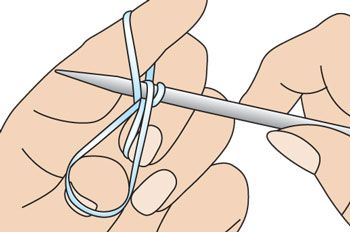

- #LONG TAIL CAST ON HOW TO#
- #LONG TAIL CAST ON PRO#
- #LONG TAIL CAST ON PROFESSIONAL#
- #LONG TAIL CAST ON SERIES#
Like with any other art form or craft, it takes practice to get the technique down! Just keep going until you feel like you have it down and your cast on stitches are sliding easily on the needles while still hugging them comfortably. Don’t pressure yourself to get it perfect the first time! Simply cast on stitch after stitch and don’t worry about counting. If you’re about to start a pattern with a long-tail cast on, I recommend just practicing the cast on first. So the next tip will help you get to a place where your tension isn’t too loose or too tight, but just right. Of course, you don’t want your tension too loose either, which can make the edge of your knitted piece a bit wonky. The Long-Tail Cast On is a two-strand cast on and is many a knitter’s preferred method of casting on because it’s strong, elastic, and quite versatile. Once you’ve reached the number of cast ons you need, your cast on. Long-Tail Cast On, as well as two of our favorites for beginning 1×1 ribbed fabrics: the Ribbed Cable Cast On and the Tubular Cast On. You’ll alternate between a knit cast on and a purl cast on. Because this is a rib cast on, you’ll be casting on one stitch knit-wise and one stitch purl-wise. When your tension is too tight during the cast on, it can make knitting your first round or row difficult and a bit of a headache as it can cause you to have dropped stitches. The invisible nature of the alternating cable cast on is more obvious when compared to the longtail cast on. This can be especially hard if you’re a beginner because you may be gripping the yarn and needle tightly. The biggest tip I have for making the long tail cast on is to try your best to keep a gentle tension. Tips for doing the long tail cast on Mind your tension If you make a purchase after clicking, I earn some yarn money at no extra cost to you!) Step 1 (Please note that these links are affiliate links. I am also using my go-to needles, which is part of the Lykke Driftwood Shorties Interchangeable Needle Set. In this tutorial, I am using the Everyday Merino yarn, which is my absolute favorite superwash worsted weight yarn, in the color Dove.
#LONG TAIL CAST ON HOW TO#
How to do the long tail cast onĬheck out the step-by-step instructions as well as the video tutorial below to learn how to do the long tail cast on.

#LONG TAIL CAST ON PRO#
With a little practice, you'll be casting on like a pro and ready to start your next knitting project! Now, let’s break it down step by step. For example, if you want your knitted piece to be 10.
#LONG TAIL CAST ON SERIES#
To perform the long tail cast on, you need to create a slipknot on your needle, then use the tail and working yarn to create a series of loops that will form the foundation row. A good rule of thumb is to use a yarn tail that is roughly three times the width of your knitting project. It's also quick and easy to do once you get the hang of it! This cast on is popular because it produces a flexible and sturdy edge that's suitable for a wide range of knitting projects, from socks to hats. It involves creating your cast on stitches using a long tail (hence the name). The long tail cast on is one of the most common cast on techniques used in knitting. So grab your needles and yarn, and let's dive into the world of long tail cast on! What is long tail cast on? This versatile cast on technique is quick and easy to learn, and produces a flexible and sturdy foundation row that's perfect for a wide range of knitting projects.
#LONG TAIL CAST ON PROFESSIONAL#
You basically get the same result.Are you ready to take your knitting skills to the next level? The long tail cast on is a must-know technique that will give your projects a polished and professional edge. Some knitters wrap the ball-end yarn around the thumb as described, but many also do it with the tail end around the thumb. The tail should go over your index finger and be held loosely between the two fingers. Wrap this strand around your left thumb, so it goes counter-clockwise around the thumb. Position the work so the yarn attached to the ball is in front. After the slip knot is secured, hold the needle in your right hand. Once you've measured out how long your long-tail needs to be, you can form the slip knot. Yet, it never fails that at some point you will underestimate and have to begin again and that's OK. There are a variety of ways that you can estimate how long your tail needs to be. The trick is to make sure that the tail is long enough for your project. Instead, you have to start with a long tail, and the stitches are formed using both the tail and the yarn attached to the ball. Unlike the knit cast-on or cable cast-on, this one does not begin near the beginning of the ball of yarn.


 0 kommentar(er)
0 kommentar(er)
